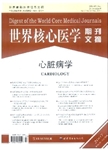在替罗非班和阿司匹林治疗的非ST段抬高性急性冠脉综合征患者:依诺肝素与普通肝素的安全性及有效性的随机对照试验
Safety and efficacy of enoxaparin vs un-fractionated heparin in patients with non-ST-segment elevation acute coronar y syndromes who receive tirofiban and aspirin: A randomized controlled trial作者机构:Duke Universit y Medical Center Box 3126 Durham NC 27710 United StatesDr.
出 版 物:《世界核心医学期刊文摘(心脏病学分册)》 (Digest of the World Core Medical Journals(Cardiology))
年 卷 期:2005年第1卷第1期
页 面:5-6页
学科分类:1002[医学-临床医学] 100201[医学-内科学(含:心血管病、血液病、呼吸系病、消化系病、内分泌与代谢病、肾病、风湿病、传染病)] 10[医学]
主 题:依诺肝素 急性冠脉综合征 ST段抬高 普通肝素 阿司匹林治疗 替罗非班 随机对照试验 安全性评价 次要终点 拮抗剂
摘 要:Context: Enoxaparin or the combination of glycoprotein IIb/IIIa inhibit or tiro fiban with unfractionated heparin independently have shown superior efficacy ove r unfractionated heparin alone in patients with non-ST-elevation acute coronar y syndromes (ACS). It is not clear if combining enoxaparin with glycoprotein IIb /IIIa inhibitors is as safe or as effective as the current standard combination of unfractionated heparin with glycoprotein IIb/IIIa inhibitors. Objective: To a ssess efficacy and safety of the combination of enoxaparin and tirofiban compare d with unfractionated heparin and tirofiban in patients with non ST-elevation A CS. Design, Setting, and Participants: A prospective, international, open-label , randomized, noninferiority trial of 1 mg/kg of enoxaparin every 12 hours (n=20 26) compared with weight-adjusted intravenous unfractionated heparin (n=1961) i n patients with non-ST-elevation ACS receiving tirofiban and aspirin. Phase A of the A to Z trial was conducted between December 1999 and May 2002. Main Outco me Measures: Death, recurrent myocardial infarction, or refractory ischemia at 7 days in the intent-to-treat population with boundaries set for superiority an d noninferiority. Safety based on measures of bleeding using the Thrombolysis in Myocardial Infarction (TIMI) classification system. Results: A total of 169 (8. 4%) of 2018 patients randomized to enoxaparin experienced death, myocardial inf arction, or refractory ischemia at 7 days compared with 184 (9.4%) of 1952 pati ents randomized to unfractionated heparin (hazard ratio , 0.88; 95%confiden ce interval , 0.71-1.08). This met the prespecified criterion for non-infe riority. All components of the composite primary and secondary end points favore d enoxaparin except death, which occurred in only 1%of patients (23 for enoxapa rin and 17 for unfractionated heparin). Rates for any TIMI grade bleeding were l ow (3.0%for enoxaparin and 2.2%for unfractionated heparin; P=.13). Using



